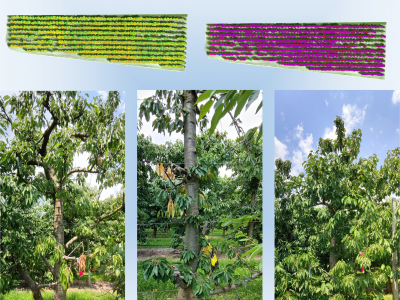Machine Learning

This is the dataset we collected for the article "Scalable Undersized Dataset RF Classification: Using Convolutional Multistage Training". 17 objects were collected in the laboratory and scanned using a 'cw radar' setup featuring 2x UWB antennas (1 transmit antenna, 1 receive antenna), inside anechoic chamber. There was no clutter added in the experiment.
- Categories:
 1361 Views
1361 Views
This dataset includes real-world Channel Quality Indicator (CQI) values from UEs connected to real commercial LTE networks in Greece. Channel Quality Indicator (CQI) is a metric posted by the UEs to the base station (BS). It is linked with the allocation of the UE’s modulation and coding schemes and ranges from 0 to 15 in values. This is from no to 64 QAM modulation, from zero to 0.93 code rate, from zero to 5.6 bits per symbol, from less than 1.25 to 20.31 SINR (dB) and from zero to 3840 Transport Block Size bits.
- Categories:
 1737 Views
1737 ViewsThis cherry tree disease detection dataset is a multimodal, multi-angle dataset which was constructed for monitoring the growth of cherry trees, including stress analysis and prediction. An orchard of cherry trees is considered in the area of Western Macedonia, where 577 cherry trees were recorded in a full crop season starting from Jul. 2021 to Jul. 2022. The dataset includes a) aerial / Unmanned Aerial Vehicle (UAV) images, b) ground RGB images/photos, and c) ground multispectral images/photos.
- Categories:
 2516 Views
2516 Views
Mental health greatly affects the quality of life. The ability to detect and classify multiple levels of stress is therefore imperative. The aim of this work is to develop machine learning models for detection and multiple level classification of stress through ECG and EEG signals for both unspecified and specified genders. The models for the detection of stress from ECG are developed for real-world use, while the models based on ECG and EEG for the detection and multiple level classification of stress are devised towards clinical use.
- Categories:
 2295 Views
2295 Views
We manually analyze 730 concurrency bug reports from four open source projects and summarize 97 linguistic patterns. These linguistic patterns describe the common properties of concurrency bug reports. We then design a tool, called CTagger, which can be configured to integrate the linguistic patterns in different ways to classify concurrency bug reports. We evaluate CTagger on 7,280 bug reports from Github and Jira.
- Categories:
 102 Views
102 Views
The cold start problem is a significant challenge in recommendation systems. Traditional methods are ineffective when the amount of interaction data is small. Further, as meta-learning has achieved increasingly remarkablesuccess in few-shot classification, some studies in recent years has abstracted cold-start recommendations into few-shot problems and applied meta-learning-based approaches, but mostly, simple transplants of generic approaches have been adopted.
- Categories:
 61 Views
61 Views
Chinese electric power audit text dataset
- Categories:
 26 Views
26 ViewsThe evolution of the Industrial Internet of Things (IIoT) introduces several benefits, such as real-time monitoring, pervasive control and self-healing. However, despite the valuable services, security and privacy issues still remain given the presence of legacy and insecure communication protocols like IEC 60870-5-104. IEC 60870-5-104 is an industrial protocol widely applied in critical infrastructures, such as the smart electrical grid and industrial healthcare systems.
- Categories:
 6657 Views
6657 Views
Nowadays, more and more machine learning models have emerged in the field of sleep staging. However, they have not been widely used in practical situations, which may be due to the non-comprehensiveness of these models' clinical and subject background and the lack of persuasiveness and guarantee of generalization performance outside the given datasets. Meanwhile, polysomnogram (PSG), as the gold standard of sleep staging, is rather intrusive and expensive. In this paper, we propose a novel automatic sleep staging architecture calle
- Categories:
 176 Views
176 ViewsDue to the smaller size, low cost, and easy operational features, small unmanned aerial vehicles (SUAVs) have become more popular for various defense as well as civil applications. They can also give threat to national security if intentionally operated by any hostile actor(s). Since all the SUAV targets have a high degree of resemblances in their micro-Doppler (m-D) space, their accurate detection/classification can be highly guaranteed by the appropriate deep convolutional neural network (DCNN) architecture.
- Categories:
 5312 Views
5312 Views

